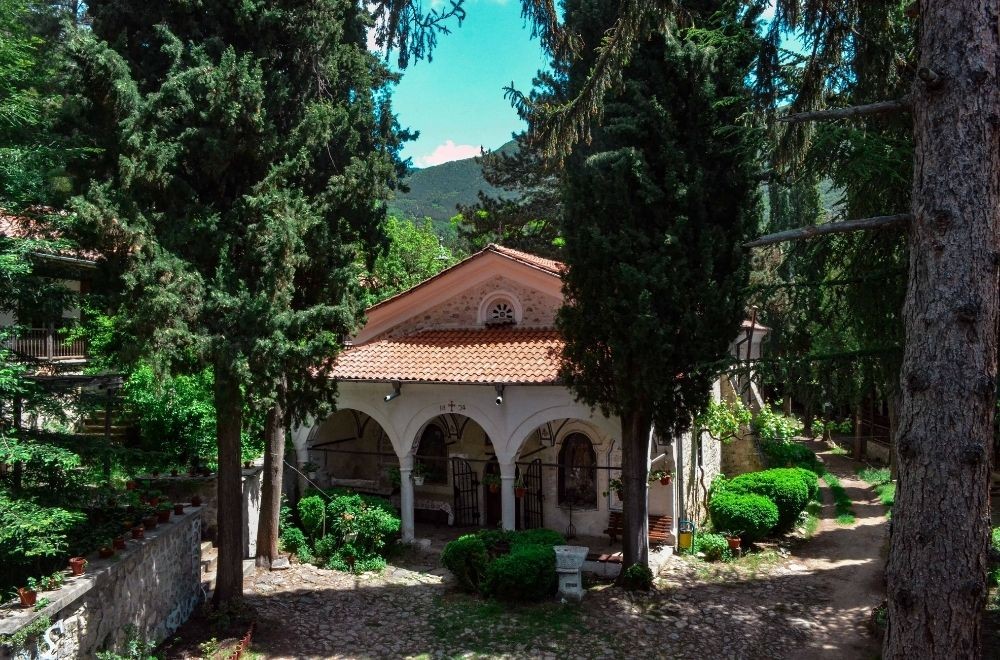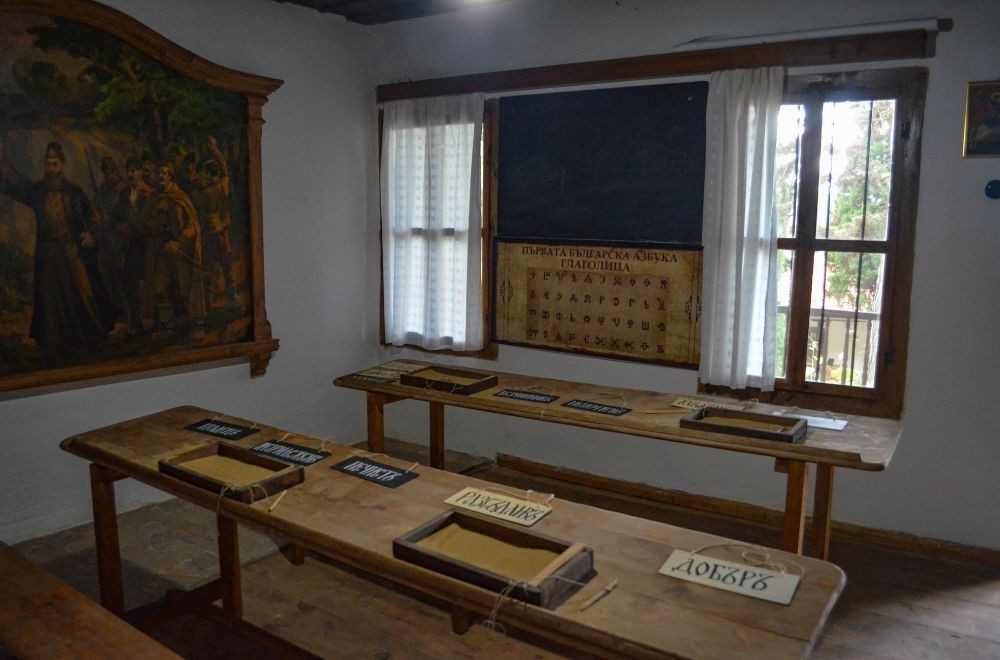One of the most beautiful monasteries in Bulgaria rises in the midst of the Balkan Range, some 2 kms. from the district town of Maglizh, but few people take the time to go off the beaten track and find seclusion far from the human hustle and bustle.
St. Nicholas monastery of Maglizh is a single-nave church which rises on the spot where an older Christian Orthodox temple once existed whose ruins lie scattered in the vicinity. Even though it has been renovated and is kept in good repair, the monastery has lost none of the patina of time and old-time atmosphere.

National Revival-time buildings surround the flower garden. From its wooden porches a breathtaking view unfolds of the surrounding mountain peaks.
But what do we really know about the history of this monastery? As it turns out – very little.
Historians agree on one thing – that even in the darkest of times of Ottoman domination, Maglizh Monastery kept the Bulgarian spirit and Orthodoxy alive. As far back as the 16th century priests from all over Southern Bulgaria were trained here. According to written sources from 1623, janissary leader Sklav came to Maglizh to collect devshirme (collection of Christian boys within the bounds of the Ottoman Empire to be converted to Islam and used as janissaries). Fearing for their children, people hid them away in the monastery. And because the monks did not betray them, the monastery was burnt down and the priests were beheaded,” says Dushko Gavazov, deputy mayor of Maglizh.
“The monastery was restored between 1954 and 1969 in two stages. According to literary sources during the time of the National Revival a boys’ school was opened here, and a few years later – a girls’ school. In 1870 it became a junior high school. The monastery also has a very rich library. Unfortunately most of the archives were burnt during the Russo-Turkish war of 1877-1878. It is thought that the apostle of freedom Vassil Levski stayed here on several occasions.”

In our day Levski’s cell, as well as the monastery school have been restored.
“There is something in the church that is not to be found anywhere else in Europe – a fresco depicting the brothers Saints Cyril and Methodius side by side with St. Patrick, the patron saint of Ireland,” Dusho Gavazov says.
According to local legend, the unusual fresco was commissioned and created on donation by an anonymous Irishman. Researchers explain its existence with the fact that all three saints are part of European civilization and had similar missions. St. Patrick lived in the 5th century and brought Christianity to the nations of the North. Four centuries later the brothers Cyril and Methodius translated the bible into Old Bulgarian and spread the written word among Slavs and Bulgarians.

And one more ting – some of the Bulgarian saints are depicted in the church frescoes wearing traditional costumes.
Photos: Veneta Nikolova and Maglizh Municipality
The Boyana Church will be an attractive center for the delegates of the 47th session of the UNESCO World Heritage Committee , who will gather in Sofia in July this year. The Church of St. Nicholas and St. Panteleimon is one of the..
The Nikola Vaptsarov Naval Academy in Varna has marked 144 years since its founding. A period in which the educational institution has followed the trends for highly specialized training of specialists in various professional fields..
Quiet among the Lyulin Mountain slopes, the Klisura Monastery of St. Petka is marked by mystery and radiates spirituality. It is located only 7 km from the resort town of Bankya, near the village of Klisura. Winter is the time when the holy monastery..
The Nikola Vaptsarov Naval Academy in Varna has marked 144 years since its founding. A period in which the educational institution has..
The Boyana Church will be an attractive center for the delegates of the 47th session of the UNESCO World Heritage Committee , who will..

+359 2 9336 661
